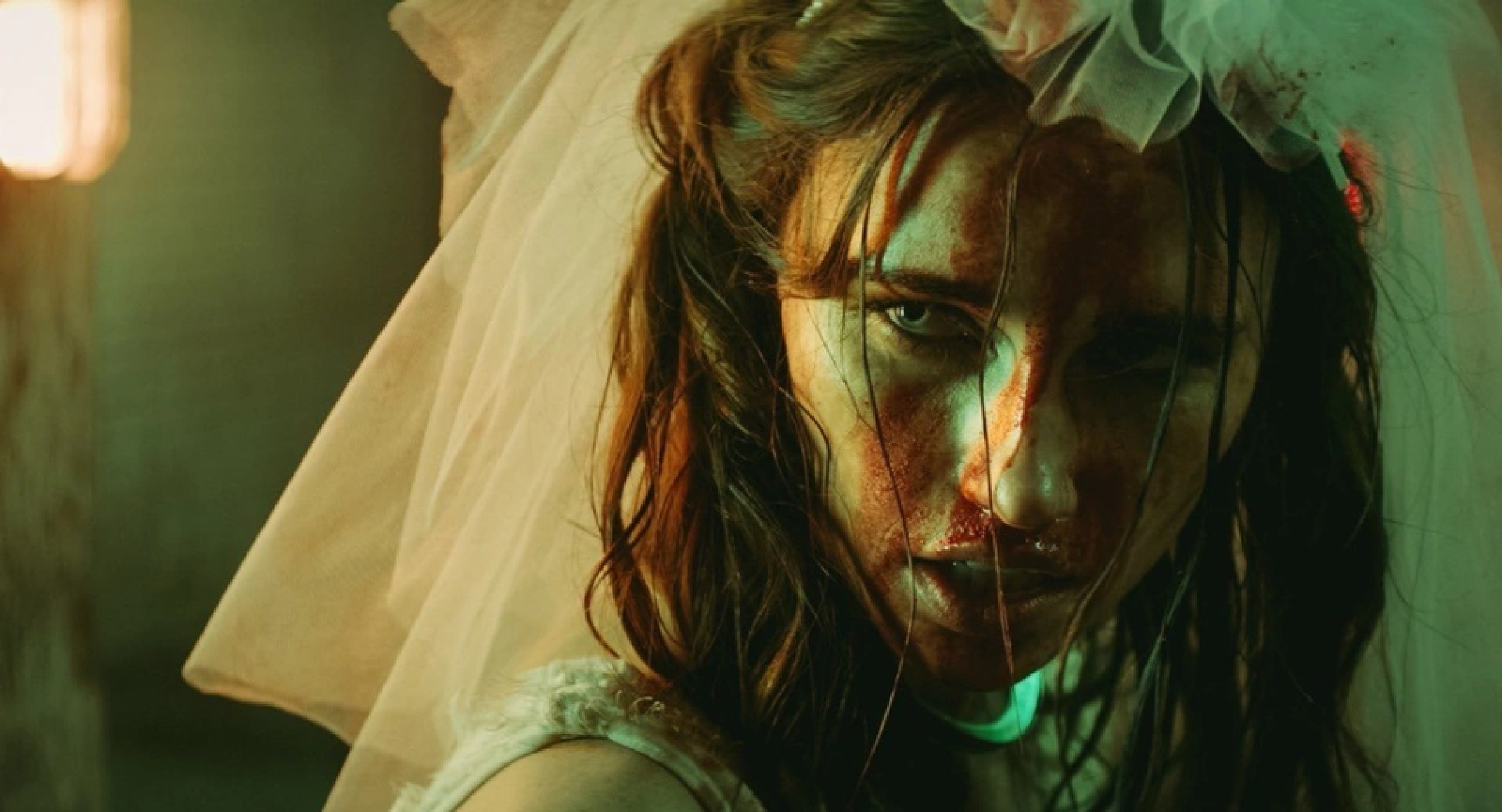Midnight Peepshow – Film Review
Published February 18, 2024

Midnight Peepshow marks an ambitious and mesmerizing venture into the macabre, interweaving a labyrinth of desire, fear, and the grotesque that delves deep into the psyche of its audience. Helmed by an eclectic mix of directors—Jake West, Andy Edwards, Airell Anthony Hayles, and Ludovica Musumeci—the film orchestrates a sinister ballet of horror, captivation, and moral decay that is as thought-provoking as it is unnerving. With an eerie premise centered around a sinister peep show that explores the deepest recesses of human depravity, Midnight Peepshow succeeds in weaving a rich tapestry of narratives that are as compelling as they are horrifying.
At the heart of the film lies the unnamed Madame, portrayed with chilling finesse by Chiara D’Anna, whose performance anchors the narrative’s myriad twists and turns. Her portrayal of the mysterious and enigmatic proprietor is nothing short of mesmerizing, bringing a certain gravitas and nuance to the role that is rarely seen in contemporary horror cinema. The supporting cast, including Derek Nelson, Bethan Walker, Jamie Bacon, and Mark Hampton, deliver commendable performances that elevate the film’s haunting atmosphere and narrative complexity.
The plot unfurls within the eerie confines of the peep show, where a businessman, played with a balanced mix of vulnerability and arrogance by Mark Hampton, finds himself entrapped in a nightmarish journey through three macabre tales of victims ensnared by an extreme fantasy website. This premise allows the filmmakers to explore themes of desire, sin, and consequence through a lens that is both darkly captivating and profoundly disturbing. The narrative is structured in a way that not only maintains suspense but also provides a deeper, more unsettling exploration of the consequences of indulging one’s darkest desires.
The direction by West, Edwards, Hayles, and Musumeci is commendable for its cohesive vision amidst the diversity of styles. Each segment bears the unique hallmark of its director, yet the film maintains a unified aesthetic that serves to enhance the overall impact. The interplay of light and shadow, combined with an evocative score, crafts a haunting ambience that lingers long after the credits roll. The directors manage to strike a delicate balance between shock and subtlety, creating a horror film that is as intellectually engaging as it is visceral.
However, Midnight Peepshow is not without its flaws. At times, the film seems to revel too much in its own complexity, leading to moments where the narrative thread becomes somewhat obscured by its ambition. Additionally, some of the horror elements feel a bit derivative, borrowing heavily from genre staples without always offering a fresh perspective. This is particularly noticeable in the second story, which, despite its initial promise, falls somewhat flat in its execution.
That said, the film’s innovative use of visual storytelling is a standout feature. The directors employ a myriad of cinematic techniques to evoke a sense of dread and disorientation, effectively immersing the viewer in the film’s nightmarish world. The use of vivid color contrasts, unconventional camera angles, and striking visual metaphors not only serves to unsettle but also to articulate the film’s deeper themes of voyeurism and the commodification of desire.
One of the most compelling aspects of Midnight Peepshow is its exploration of the moral ambiguities inherent in its premise. The film does not shy away from presenting its characters in shades of grey, challenging the audience to confront their own perceptions of right and wrong. This moral complexity adds a rich layer to the narrative, prompting viewers to question not just the actions of the characters, but the societal norms that underpin their desires and fears.
In terms of pacing, the film strikes an almost perfect balance, skillfully interweaving its multiple storylines while keeping the audience engaged and on edge. The transition from one story to the next is seamless, allowing for a narrative flow that is both coherent and compelling. This is a testament to the skill of the directors and editors, who manage to maintain a sense of cohesion despite the film’s episodic structure.
Midnight Peepshow is also notable for its social commentary. Through its depiction of the extreme fantasy website and the characters’ interactions with it, the film offers a pointed critique of the digital age’s commodification of human desire and the ethical quagmires it entails. This thematic depth sets Midnight Peepshow apart from many of its contemporaries, making it not only a thrilling horror film but also a provocative examination of modern society’s darkest corners.
Midnight Peepshow is a bold and imaginative foray into the horror genre that impresses with its atmospheric tension, compelling performances, and thematic depth.
